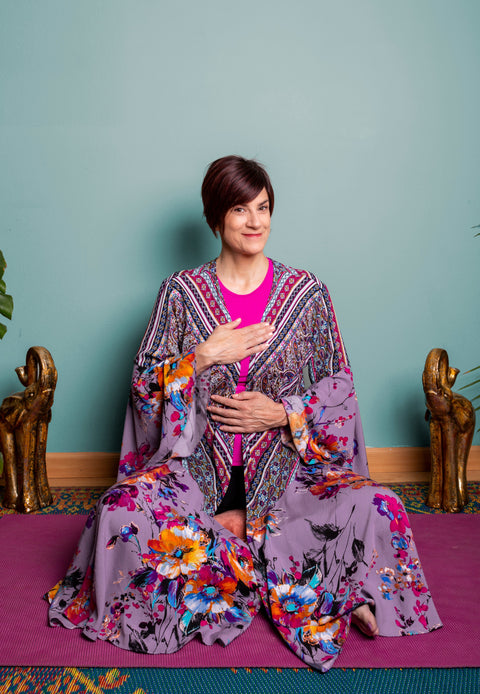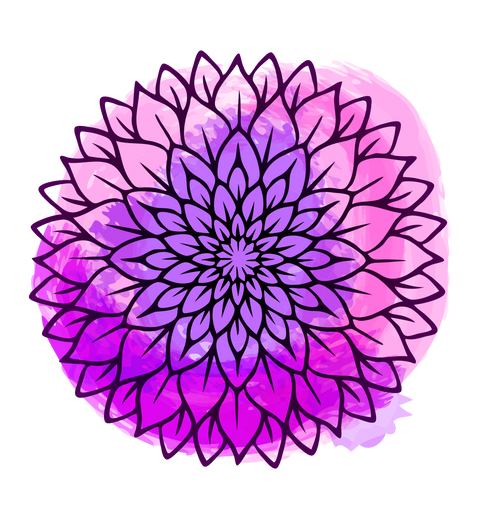Overcoming Mental Afflictions: A Journey Through the Five Kleshas
Yoga has been more than just a practice for me—it’s been a lens through which I’ve come to understand my own mind. It has revealed the ways my thoughts can either support me or hold me back. Time and again, I find myself turning to the Yoga Sutras for wisdom. One passage that particularly resonates is Yoga Sutra 2.3, where Patanjali identifies the five Kleshas (mental afflictions)—the hidden forces that shape our perception and fuel our suffering. Studying these teachings has helped me navigate my own mental patterns with greater awareness and clarity.
Avidya: The Fog of Misperception
Avidya, or ignorance, is the foundation of all suffering. It is the inability to see things as they truly are. I realized that much of my stress came from misperceiving my circumstances. I was equating my professional struggles with personal failure. I believed that if things weren’t perfect, I wasn’t enough. But through self-reflection, I started questioning these beliefs. Was my worth truly tied to external achievements? Or was I stuck in an illusion of my own making?
Asmita: The Ego’s Grip
Next came Asmita, or egoism. The idea that I had to prove something, that my identity was wrapped up in my title and success, was holding me back. I was so attached to the idea of who I “should” be that I wasn’t allowing myself to simply be. During my yoga practice, I began observing my thoughts without judgment. I noticed how often my mind said, “I am not good enough” or “I should be doing better.” This awareness was the first step in loosening the ego’s grip.
Raga: The Pull of Attachment
With the third Klesha, Raga (attachment), I realized I was clinging to comfort—certain relationships, routines, and identities—because they felt safe, even when they no longer served me. I wanted to hold onto the past, fearing that change would bring loss. But yoga teaches impermanence. Just as we flow from one posture to the next, life moves forward whether we resist it or not. I started focusing on gratitude for what was, rather than grasping for what used to be.
Dvesha: The Resistance to Discomfort
If Raga was my tendency to cling to pleasure, Dvesha (aversion) was my instinct to push away anything that reminded me of past pain. I noticed this pattern in small ways—steering clear of conversations that touched on past wounds, or hesitating to try something new for fear of repeating an old mistake. But the more I dodged discomfort, the more power it held over me. Yoga challenged me to stay present, to breathe through discomfort rather than run from it. I realized that by facing what I once avoided, I could loosen its grip and move forward with greater freedom.
Abhinivesha: The Fear That Lingers
Finally, there was Abhinivesha, the fear of loss and death. This Klesha is deeply ingrained—it’s the instinctual clinging to life, to certainty, to what we know. For me, it manifested as anxiety about the future. What if I failed? What if things didn’t turn out the way I hoped? This fear kept me stuck, unable to move forward. But the more I cultivated mindfulness, the more I saw that fear was just another passing wave—temporary, like everything else.
Finding Freedom Through Awareness
Recognizing the Kleshas was like turning on a light in a dark room. Once I could see them clearly, they lost some of their power. My yoga practice became a tool not just for movement, but for deep inner work. I began to meet my thoughts with curiosity rather than judgment. I learned to sit with discomfort, to embrace change, and to loosen my grip on the illusions that caused suffering.
Patanjali doesn’t just identify these mental afflictions—he offers a way through them. Through self-awareness (svadhyaya), practice (abhyasa), and letting go (vairagya), we can begin to dissolve the layers of suffering and step into a more liberated way of being.
Reflections: How the Kleshas Show Up in Your Life
The journey through the Kleshas is ongoing. They don’t disappear overnight, but with awareness, they lose their ability to control us. So I leave you with this question: Which Klesha do you notice most in your life right now? Is it attachment, aversion, ego, fear, or misperception?
As you step onto your mat—or simply into your day—bring a sense of curiosity. Observe your thoughts. Notice what arises. And remember, the path to clarity isn’t about eliminating these afflictions, but about learning to see through them.
Lesson
Yoga Sutra 2.3: avidyā-asmitā-rāga-dveşa-abhiniveśāḥ kleśāḥ
- Avidyā (Ignorance) – A fundamental misperception of reality, seeing the impermanent as permanent or the false as true.
- Asmitā (Egoism) – Identifying too strongly with the ego, leading to separation and attachment to the "I" and "mine."
- Rāga (Attachment) – Clinging to pleasure and desire, causing suffering when those things are lost or unattainable.
- Dveşa (Aversion) – Avoidance or resistance to discomfort, creating fear and suffering when faced with the unpleasant.
- Abhiniveśāḥ (Fear of Death/Clinging to Life) – The deep-rooted instinct for self-preservation, often manifesting as anxiety or resistance to change.
These afflictions shape our thoughts, emotions, and reactions, keeping us stuck in habitual patterns. Through practice (abhyasa) and awareness (svadhyaya), yoga helps us recognize and dissolve these obstacles, leading us toward greater clarity, inner freedom, and ultimately, samadhi (a meditative state of oneness).



